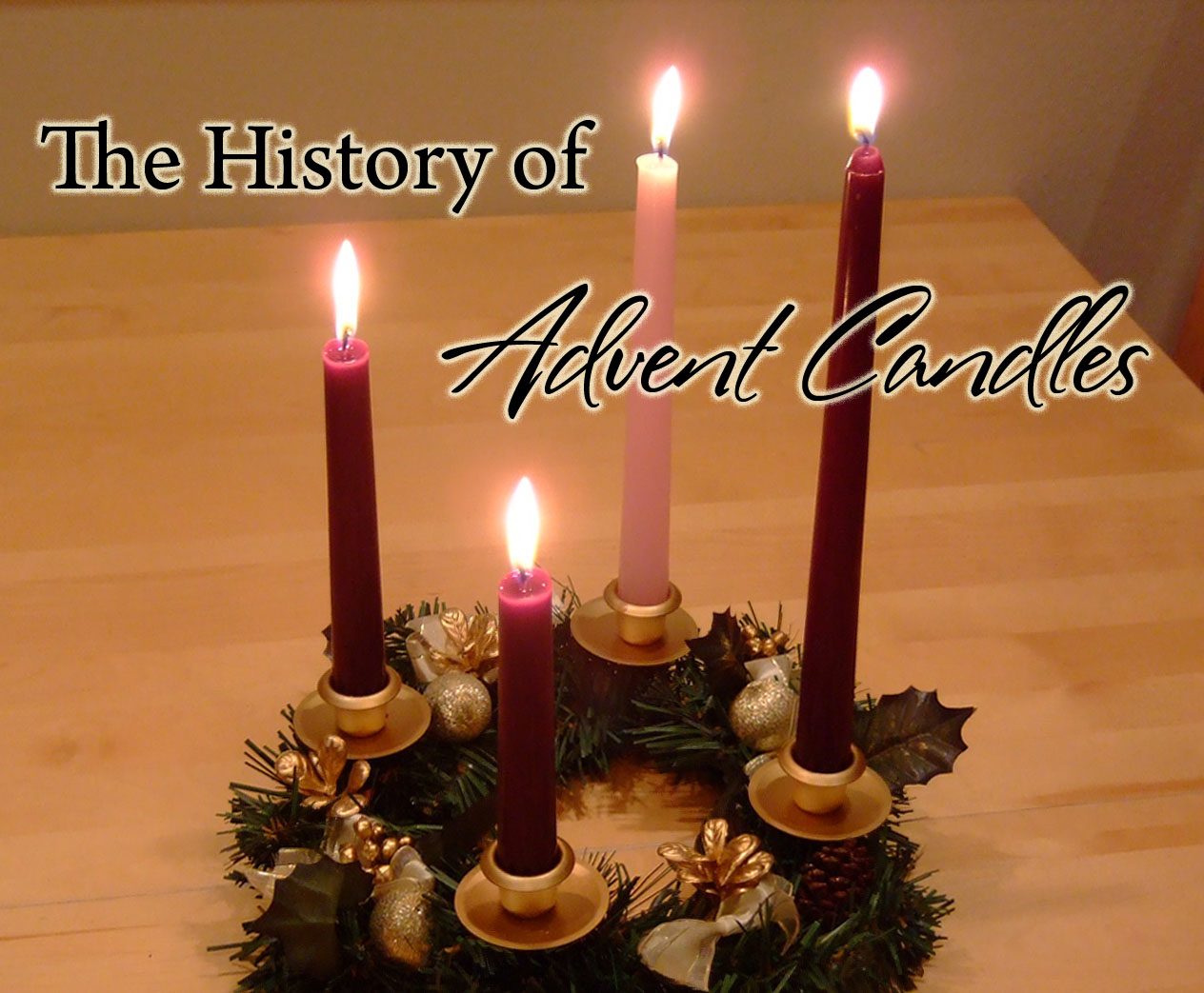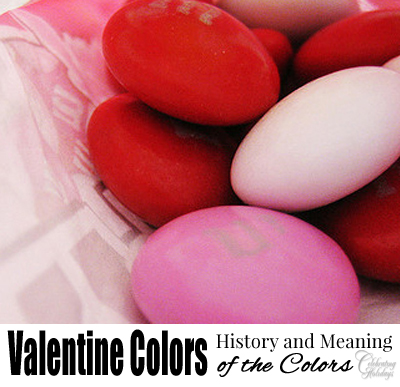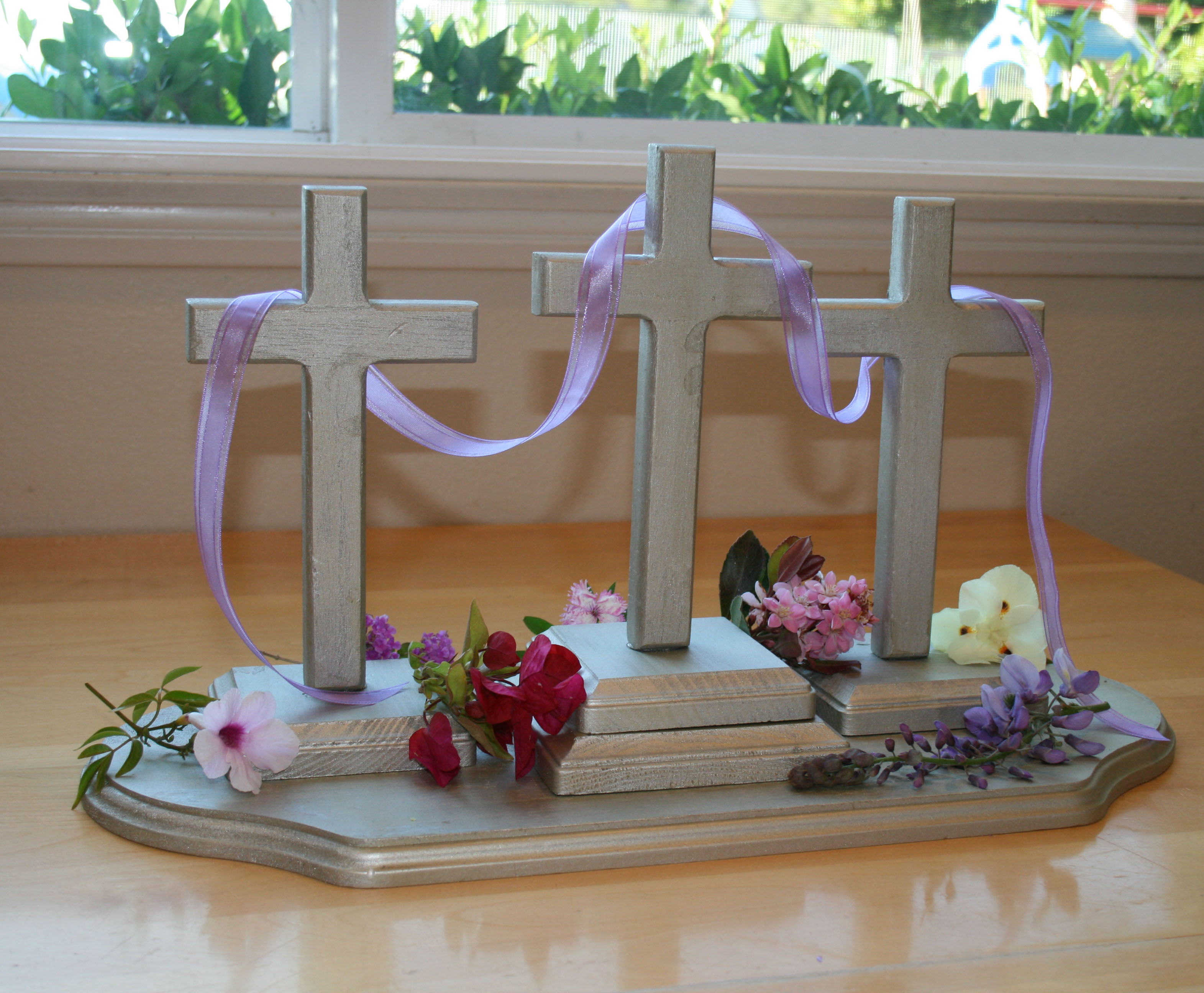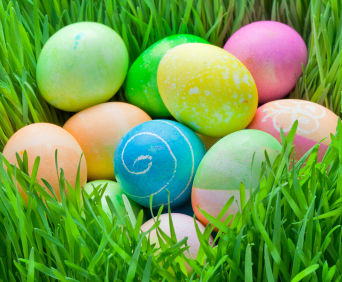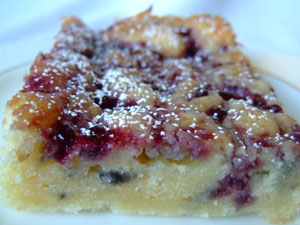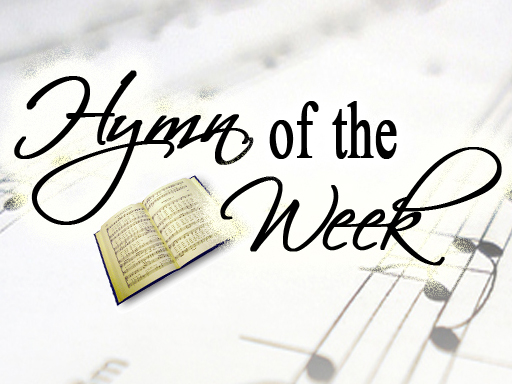Easter Colors
 Have you ever wondered how the colors of Easter came to be associated with the holiday? If so, you can learn the Christian history, meaning and symbolism of Easter colors here!
Have you ever wondered how the colors of Easter came to be associated with the holiday? If so, you can learn the Christian history, meaning and symbolism of Easter colors here!
Purple (The Color of Lent)
The color most commonly associated with the Easter season (or more specifically the season of Lent that precedes Easter Day) is purple. It is the color found in church sanctuaries throughout the world during the season.
Interestingly purple was one of three colors of yarn (blue, purple and scarlet) used in abundance throughout the Jewish temple and in the clothing of Jewish priests (Exodus 25-28 and 35-39). Quite possibly these colors are significant in their meaning. The color blue is thought to represent God in the heavens, whereas scarlet/red represents man (the name for “Adam” in Hebrew can be translated “man” or “red”) and purple (the combination of red and blue) is prophetic of the coming Messiah who would be both God and man and who would serve as the mediator between God and man as a result of his suffering on the cross:
“For there is one God and one mediator between God and men, the man Christ Jesus, who gave himself as a ransom for all men” (1 Timothy 2:5-6a).
In ancient times, purple was considered a precious dye. Because it was so costly to make, it came to be associated with kings and royalty making it especially intriguing that the Roman soldiers placed a purple robe on Christ before his crucifixion:
“The soldiers led Jesus away into the palace (that is, the Praetorium) and called together the whole company of soldiers. They put a purple robe on him, then twisted together a crown of thorns and set it on him. And they began to call out to him, “Hail, king of the Jews!” Again and again they struck him on the head with a staff and spit on him. Falling on their knees, they paid homage to him. And when they had mocked him, they took off the purple robe and put his own clothes on him. Then they led him out to crucify him” (Mark 15:16-20).
The term for purple used in the Gospel of Mark refers to a shade that varies from rose to purple (Thomas and Gunry, A Harmony of the Gospels). The Gospel of Matthew uses a term that is translated scarlet (Matthew 27:28). Using a robe made of a “cheap” or “fake” purple dye added to the mockery of the soldiers who intended to imply that Jesus was a “fake” king; if only they knew that they were about to crucify the “author of life” (Acts 3:15) and the King of all kings. The Apostle John wrote about his vision of Jesus at the end of time as follows:
“He is dressed in a robe dipped in blood, and his name is the Word of God . . . . On his robe and on his thigh he has this name written: KING OF KINGS AND LORD OF LORDS” (Revelation 19:13, 16).
More costly than any purple robe is the robe dipped in the precious blood of Christ!
White and Gold (The Colors of Easter Day)
In an article on “The Easter Season” by Dennis Bratcher, he writes of liturgical churches, “Color used in worship is especially important during the season of Easter. The changing colors of the sanctuary from the purple of Lent to the black of Good Friday provide graphic visual symbols for the Lenten journey . . .The Sanctuary colors for Easter Sunday and Ascension Day are [traditionally] white and gold.”
Throughout the Bible, white symbolizes purity:
“‘Come now, let us reason together,’ says the LORD. ‘Though your sins are like scarlet, they shall be as white as snow; though they are red as crimson, they shall be like wool’” (Isaiah 1:18).
Interestingly, angels, believers in heaven, and Jesus in his glory are all characterized as wearing white. Of the transfiguration of Jesus, the Gospel of Mark records:
“His clothes became dazzling white, whiter than anyone in the world could bleach them” (Mark 9:3).
Throughout the history of the church, baptisms traditionally took place on Easter Sunday with candidates wearing white as a symbol of their new life in Christ.
“We were therefore buried with him through baptism into death in order that, just as Christ was raised from the dead through the glory of the Father, we too may live a new life” (Romans 6:4).
The color gold is indicative of the riches of our inheritance in Christ and His kingdom, our eternal home, where the New Jerusalem is made “of pure gold, as pure as glass” (Revelation 21:18), and “the great street of the city was of pure gold, like transparent glass” (Revelation 21:21).
Pastels (The Colors of Spring)
Easter decorations are generally found in a variety of pastel colors — a celebration of the season when new life appears all over the earth and flowers bloom in a stunning array of color. A time when:
“Flowers appear on the earth; the season of singing has come, the cooing of doves is heard in our land” (Song of Solomon 2:12).
What magnificent timing that the Lord chose for his resurrection, when the whole earth is literally “singing” of new life and bursting into color!
This page was created by:

Back to main Easter Symbols page.
We welcome your ideas! If you have suggestions on how to improve this page, please contact us.
You may freely use this content if you cite the source and/or link back to this page.
